Power
to the People
People express their needs in many ways.
UX [user experience] Design explores, validates and meets these needs. This data-driven approach is especially helpful when moving beyond proven paths.
I've worked with a wide range of companies in this field – from startups to industry titans, along whole product life cycles.
Power
to the People
People express their needs in many ways.
UX [user experience] Design explores, validates and meets these needs. This data-driven approach is especially helpful when moving beyond proven paths.
I've worked with a wide range of companies in this field – from startups to industry titans, along whole product life cycles.


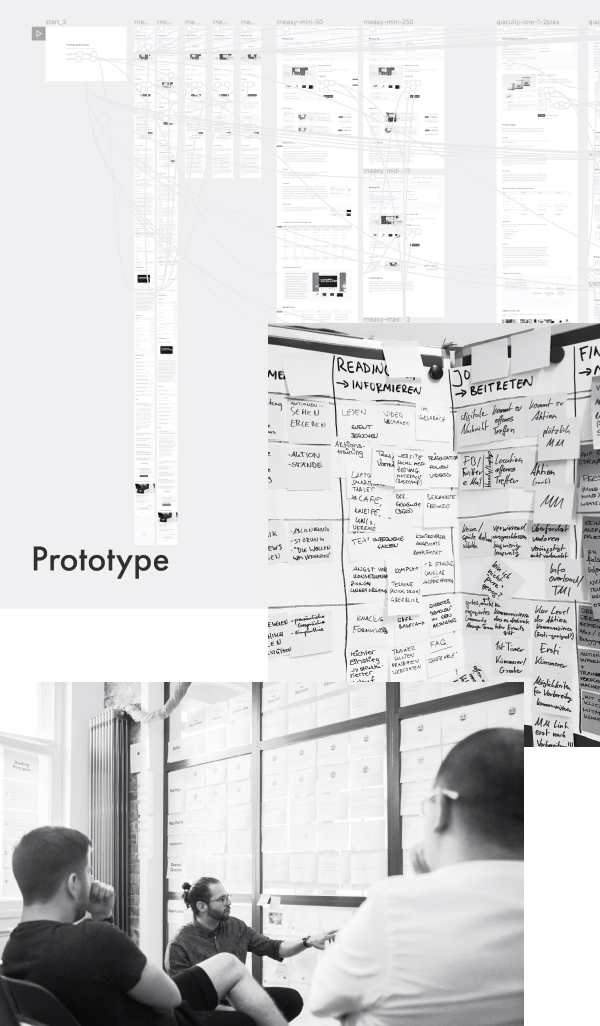
UX Research
UX Research takes a thourough look at users and their context to rely more on reality and less on assumptions. Sources range from already available data like studies, statistics or online communities to real users or field experts. Beyond interviews and surveys, methods can be exploratory (extreme users, walk in their shoes), evaluative (eye tracking, task analysis) or even generative (design fiction, future headlines). To cover sufficient ground, research is commonly done using mixed methods.
And with the world being on fire, we need to ask ourselves how to account for systemic change and dynamics.
Unthinkable questions
Can we help you buy less, or not at all? Unthinkable questions seem radical in our capitalist culture. However they acknowledge that the current culture is radical, not the question.
Uncomfortable truths
People can say something and do the opposite in a heartbeat without blinking an eye.
Resolving these conflicts goes into cognitive psychology. But mapping and understanding such angles is crucial when we deal with collective denial or apathy during climate breakdown.
Face to face
No matter if the research is done in an interview or remote survey – communication works always best on eye level. Acknowledgement of individual struggles, mental models and views on the world will provide a better understanding and sharing of perspectives.
Research types
Design Thinking
Design Thinking is like the scaffolding of our daily work. With no defined order, we can start with anything that promises sufficient insights on how to proceed effectively. There are also condensed approaches like Design Sprints or RITE studies that aim to answer questions with small teams in a short amount of time.
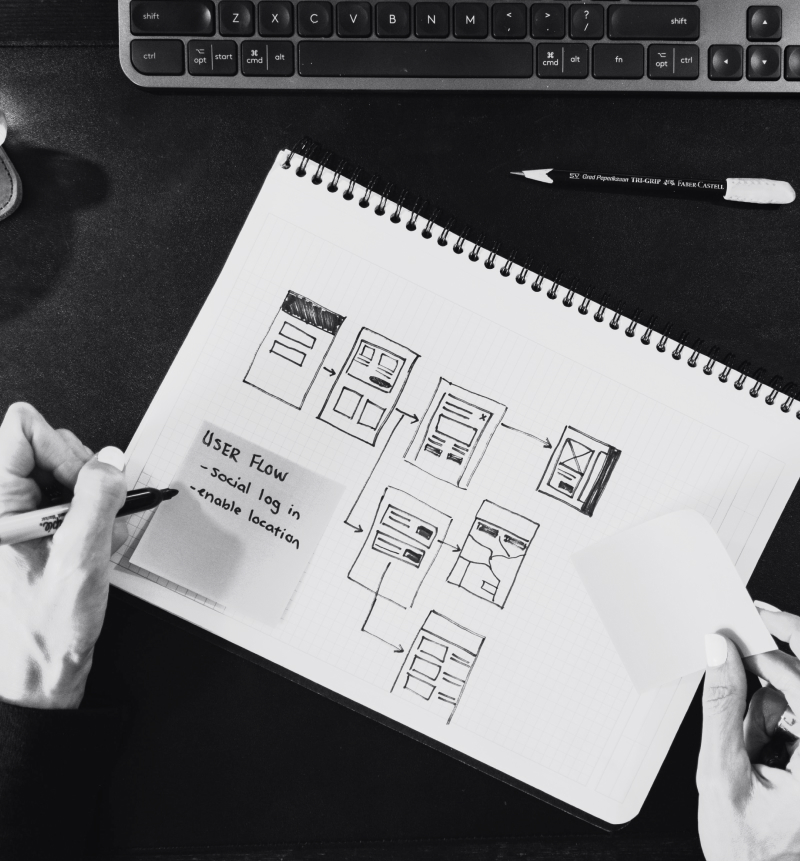
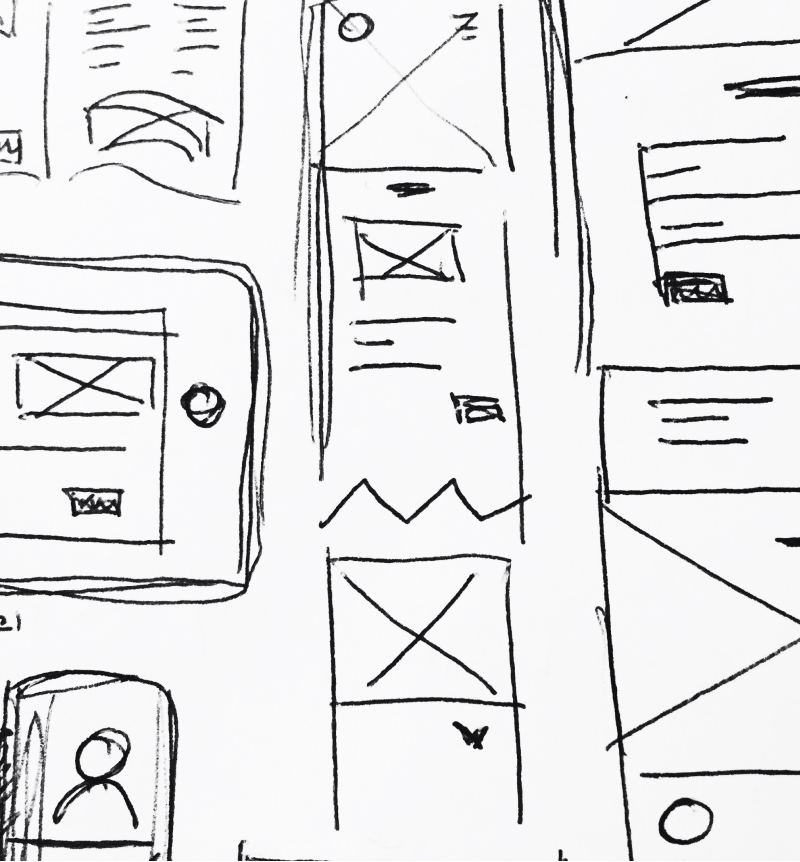
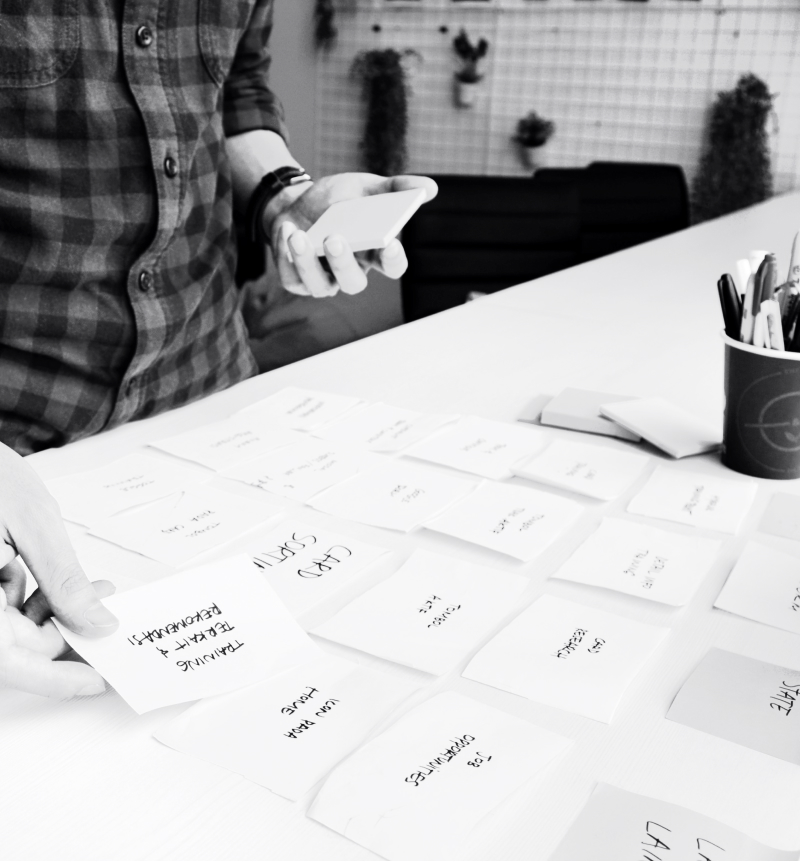
Empathise
Understanding your users and the challenges they are facing is crucial. We make sure to work with real data – see UX Research – and not assumptions. Asking colleagues doesn't count!
Define
Articulating the problem we want to solve sounds easy. However we'll have to make sure to nail this one as in, the problem actually exists and considering focus and framing. Can be anything from "stressed due to a pandemic" to a whole user story.
Ideate
This is always fun, even more so if done together. And many methods to choose from! Do some sketches, crazy 8s, round robins, impro theater, whatever works best for your team and challenge.
Prototype
Get your ideas into shape! From low-fidelity storyboards or paper prototypes to high-fidelity click dummies, play dough models or dioramas and even smokescreen tests, we can do it all. Depending on the budget.
Test
There is a whole section about this on the bottom of the page. Showtime!
Strategy
Choice is all around us. We quote old wisdom, devise business strategies, we question and challenge. We follow and lead. We do so consciously or rely on our experiences. We make time in between to reevaluate – are we moving in the right direction? For whom? How will these changes affect our communities? Since we can not not do strategy, we can embrace being able to choose. So choose!
Strategy
Choice is all around us. We quote old wisdom, devise business strategies, we question and challenge. We follow and lead. We do so consciously or rely on our experiences. We make time in between to reevaluate – are we moving in the right direction? For whom? How will these changes affect our communities? Since we can not not do strategy, we can embrace being able to choose. So choose!
Ground Zero
This is where we start. Many of our previous assumptions and learned heuristics won't stand the blast of climate chaos, so we build a make-do navigation grid to move forward. We can use and adapt textbook methods, but the framing is important: No human has ever seen the planet like this before.
Speculative Design
Design can question and challenge our ways of thinking. What if your service was less of an optimized product and more of an open debate? Speculative Design invites you to explore possible futures and take part in driving the narrative.
An example: This X does not exist is a machine learning meme that explores generative algorithms and our relation to content and concept creation.
Create your own Canvas
All voices have value – doing workshops, problem solving in groups by growing our post-it collection on a canvas together can be quite liberating for teams. While there are many wonderful frameworks it's always worth to take a moment considering how we might adapt or even rework our approach to facilitate the discussion in the best way.

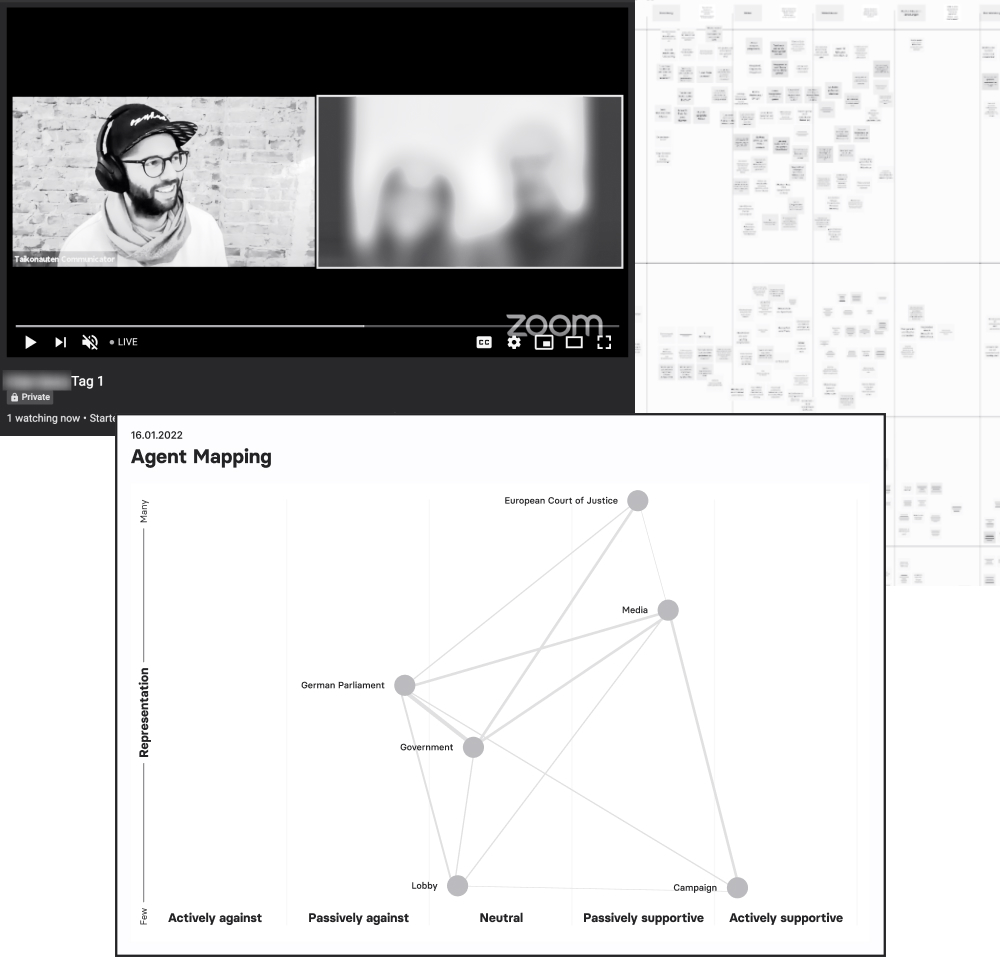
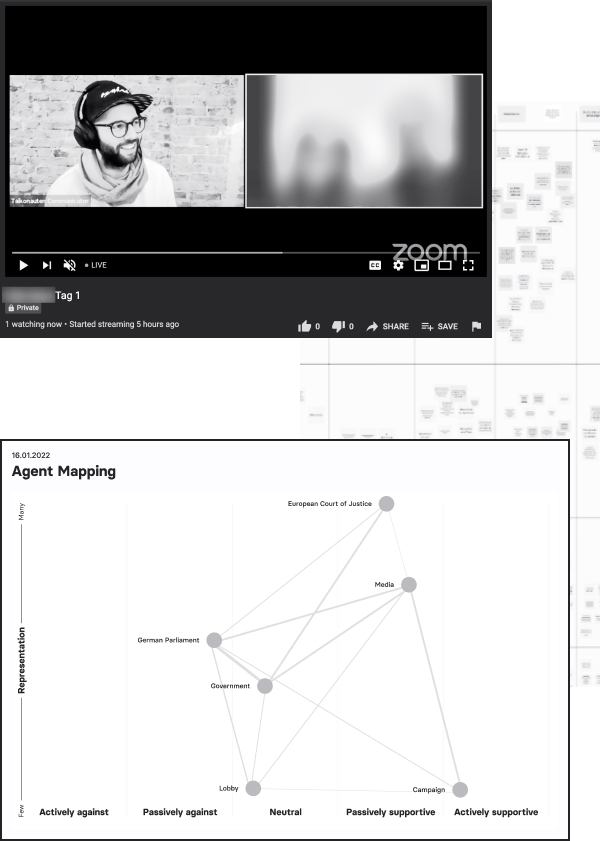
Checks and balances
Doughnut Economics describes resource limits and life essentials. Anything beyond the safe zone is stretching our regeneration capacities. It can act as a compass indicating how we can achieve a good life for everyone without collapsing our support systems.
A systemic view
To create an ecologically safe and socially just future, the Doughnut invites you to update your economic thinking to the 21st century – from growth agnostic approaches to regenerative cultures and distributiveness by design.
Testing
Can we prototype it? Mostly, yes. Or we test what's already out there. More importantly, what is necessary to find out what we are looking for? From sketches to click dummies and experimental labs, it will always be exciting.
Little things go far
Covering 70-80% of the key issues is possible with 5-6 participants in a typical usability test. So in many cases it is better to test more often but smaller. There are many options for creating sophisticated prototypes and equally many to do it simple, quick or dirty.
Setting the stage
Welcome to the scenario. You will interact with a prototype which might not be fully functional, but rather outline how we envision something to be. Before we start, this is our world, the backstory holding it all together. Embracing this story will put you into a very special pair of shoes – shoes from the future. Are you ready?
Live Evaluation & Analysis
Testing works best as a team experience. I've seen CEO's shout »to the right, to the right!« trying to guide participants within their app or horrified engineers looking at weirdly creative workflows their users came up with.
We collect insights and cluster together, the memory of seeing how people interacted with the prototypes serving as a reality check for the coming weeks.
Rinse & repeat.
Read on:
Stay funky.
Want to keep reading? I'll let you know when there's something new and promise to simply follow my own curiousity. Are you up for a surprise?
Let me know
what you
think.
Old School
PGP Public Key, Fingerprint: 0x1A3A5140C3C3CEFD
Hagen Plum
Tegeler Straße 24
13353 Berlin, Germany

 and
and